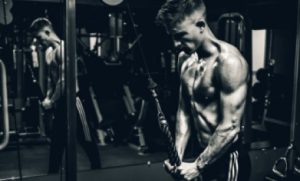“You have to drink a protein shake or eat a protein-rich meal immediately after your workout”.
Everybody who works out and has done any research on bodybuilding probably have heard this phrase at least once in their life.
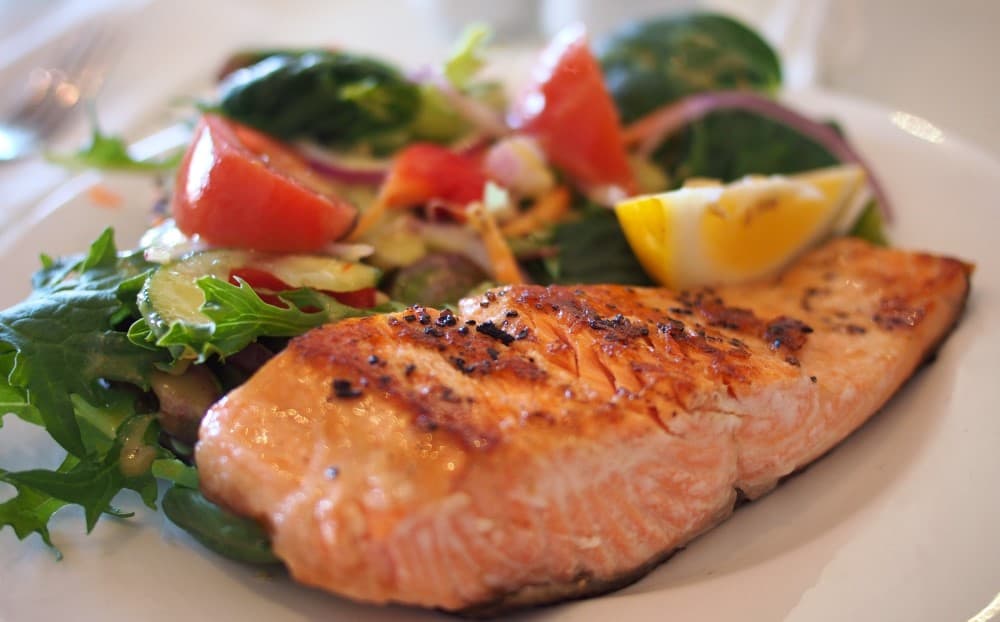
“If you don’t ensure sufficient protein intake and not pay attention to the anabolic window up to 15-60 minutes after your workout, all your gains will be lost”.
That’s actually a widely spread mystery within the fitness world.
From this assumption, the bodybuilding community, fitness gurus and gym bro’s have concluded that it’s necessary to provide your body after the workout with a combination of protein and carbs as soon as possible.
What’s the alleged benefit they all promise?
Stoppoing the catabolic processes and starting the anabolic and regenerative processes within our body.
Fair enough, right? Right.
After we trained hard and exposed our muscles to new incentives to grow, we all want maximum gains.
But is there actually any indication and truth to it? Or is it just another myth that was created between bench press and squat rack?
In order to make sure that you, guys, are enlightened about this topic, what’s true about it and what’s bs, I am going to put it all together for you.
Today, I’ll dive with you into one of the most common fitness myths ever, the anabolic window.
We’re going to take a look at what the anabolic window actually is about, where it comes from and what the science and gym bro’s argue about.
If this sounds like what you were looking for, then you want to read this article!
What’s the Anabolic Window about? How does it work?
First of all, before we get deeper into analyzing both sides, let’s start with the most important thing.
What does the anabolic window actually state?
Typically, the anabolic window will last for up to 45 minutes after the workout, during which time the body and muscles shall be particularly receptive and able to benefit to its maximum.
Some people speak up to 60 minutes, other only 15 minutes.
As you can see, there are different opinions between supporters of the anabolic window.
But, they all agree with one thing.
If you don’t drink a protein shake within the next hour after your workout, it was all a waste of time.
Another common argument for the anabolic window: within the first 45 minutes after training, the protein synthesis should be at its peak.
To put it in a nutshell, the anabolic window means nothing more than supplying your body with required nutrients (proteins, carbs) in the first few minutes after training to effectively build muscles.
Where does it come from? How did the anabolic window achieve its popularity?
Right here’s the everyday logic humans use to aid the anabolic window:
After you carry weights, your muscle fibres are in a damaged state and your glycogen stores (carbs that your body stores in the liver and muscles) are depleted…
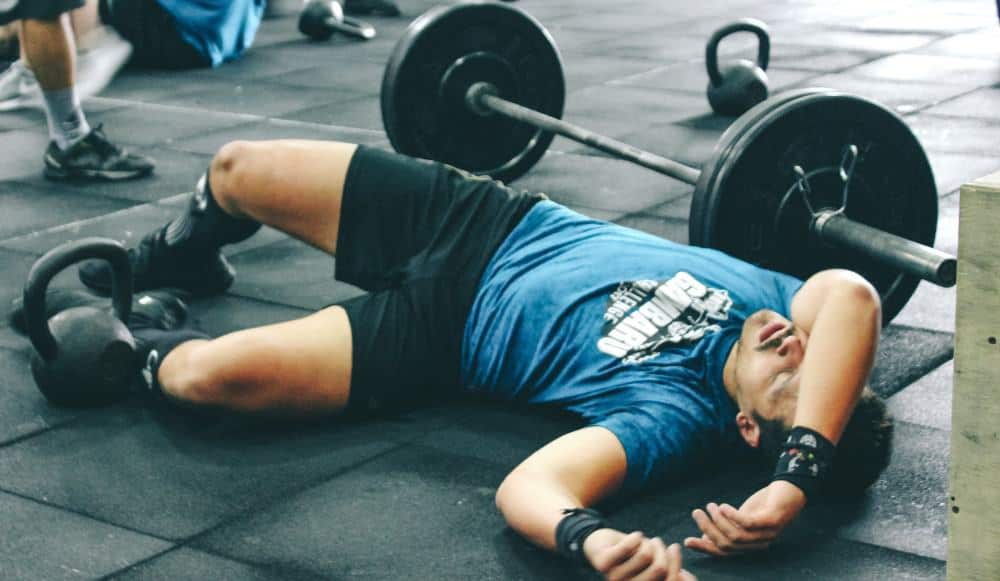
That’s actually based on scientific evidence and nothing wrong with it.
But after this is where all the fitness “gurus” and gym bro’s come into play with their “technological know-how”.
By means of consuming a combination of protein and short-chain sugary carbs (like dextrose), you are able to compensate these consequences of stopping further muscle protein breakdown, spiking muscle protein synthesis, and refilling your glycogen stores.
This results in a transient state in which your body can quickly assemble new lean mass.
That’s the anabolic window!
The hassle with this principle is that it is based solely on logic and good judgment.
It’s not scientifically proven.
But to emphasize it once more, nothing wrong about the theory!
The idea behind it makes sense. Heavy workout depletes the glycogen stores and damages muscles.
However, using these facts to create assumptions like: ” You must drink your protein shake 30 minutes after a workout, otherwise, you’ll lose all your gains” is just pure chatter.
Everybody seems to know it better.
According to the principle: ” the biggest guy is always right”.
When someone who benches or deadlifts a lot is keen to have a cozy little chat to share his brand-new fitness hacks, most likely everybody is eagerly listening.
The problem is that still nowadays, a lot of people seek to find the “fast” way to build muscles, to gain weight and look like a bodybuilder.
This continues with tonnes of other myths and assumptions that are made on social media. Doesn’t matter if it’s YouTube, Instagram, Reddit or Facebook.
Almost every influencer has its own training program and diet hack that promises you to achieve your dream body within (30) days. Of course, only for hell a lot of money.
Trust me, you don’t need these programs. Just make yourself a picture of what the basics of training and nutrition are. Consistently learn more, experiment and try out what works for yourself what does not.
That’s the only logical and in my opinion also best way how to actually find your optimal plan.
Nobody can predict what’s best for you, especially without having met you in person or seen you working out.
Eventually, that’s a big issue. As somebody spreads it over their community, they trust it and get the word out further.
Too many people are too naive and gullible overcomplicating the whole concept.
Fitness is neither only a black or white topic nor is it rocket science.
Truths about the Anabolic Window?
What does science say? Is there actually scientific evidence?
Let’s take a closer look at the “pro-anabolic window side”.
I wasn’t that much different a couple of years ago.
After every workout, I sat down with my gym buddies and had my protein shake.
Otherwise, the whole workout would have been wasted time and my muscles were gone… I didn’t have a choice…
Nothing wrong with that, I definitely believe that post-workout nutrition is indeed essential, but I don’t see it as strict as I used to and like still a lot of people do.
If I eat an hour after my workout, that’s fine. Even if its two hours or already after half an hour, fine by me.
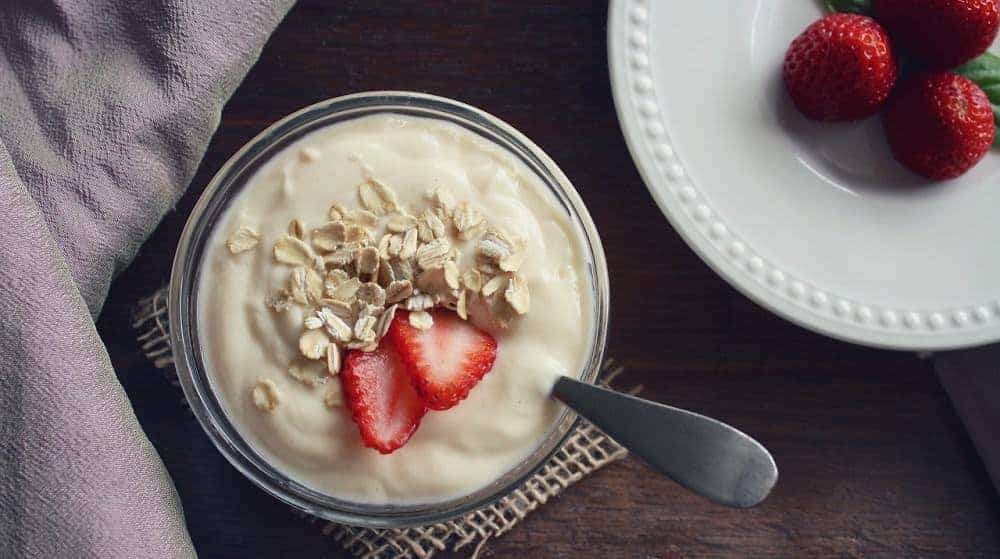
As it is with building muscles. The most important thing is to eat enough calories throughout the day, each day. Every week, every month.
Being consistent.
No doubt, protein is crucial for building muscle mass, but you won’t lose any if you don’t drink your shake 30 minutes after a workout, trust me.
It correlates with your pre-workout nutrition as well. For example, if you ate 3-4 hours before your workout, then you definitely want to consume 20-40 grams of protein afterward.
But, there is one specific occasion where the anabolic window actually gains more consolation.
If you’re working out on an empty stomach or fasted.
However, unless you work out at five A.M on an empty stomach, there’s much less urgency when it comes to consuming your post-workout meal.
Consuming as few as 20 grams of protein as part of your pre-workout meal can substantially increase the delivery of amino acids to your muscles for up to 2-3 hours post-workout.
That means, even in case you delay your post-workout meal for a couple of hours, your body remains in charge of the amino acids to build and recover muscles.
One of the main benefits of the anabolic window is the increased muscles protein synthesis rate.
Why is this important? Because muscle protein synthesis is actually the most important factor for muscle growth.
So, what’s wrong with that? Again, nothing wrong in particular with the theory, but the research does not prove and support this assumption.
Alan Albert Aragon and Brad Jon Schoenfeld conducted a study about nutrient timing: is there a post-workout anabolic window?
What’s their conclusion?
There is no decisive evidence that supports consuming a combination of proteins and carbs instantly after a workout increase muscle protein synthesis.
“Despite claims that immediate post-exercise nutritional intake is essential to maximize hypertrophic gains, evidence-based support for such an “anabolic window of opportunity” is far from definitive. The hypothesis is based largely on the pre-supposition that training is carried out in a fasted state.”
“During fasted exercise, a concomitant increase in muscle protein breakdown causes the pre-exercise net negative amino acid balance to persist in the post-exercise period despite training-induced increases in muscle protein synthesis [reference].Thus, in the case of resistance training after an overnight fast, it would make sense to provide immediate nutritional intervention — ideally in the form of a combination of protein and carbohydrate — for the purposes of promoting muscle protein synthesis and reducing proteolysis, thereby switching a net catabolic state into an anabolic one.
What does that tell us?
Some studies found a slight but actual benefit, other studies even found more significant benefits from pre-workout nutrition.
Furthermore, a lot of these studies had participants who don’t work out regularly, the majority were elderly or obese people.
Eventually, adding all things together there is no real evidence for the promising benefits and consequences of the anabolic window.
On the opposite, there is research-based evidence that pre-workout nutrition has similar if not even higher benefits than post-workout.
Why the Anabolic Window is a Myth.
After we’ve looked at the ‘pro-anabolic window side’, it’s now time to focus on what speaks against it.
One more alleged benefit of the anabolic window is to prevent muscle breakdown.
How does that work?
This is accomplished with the aid of simple carbs (like dextrose) included in your post-workout shake.
Short-chain sugary carbs like dextrose spike insulin and raise its level. It is proven that spiking insulin reduces muscle protein breakdown.
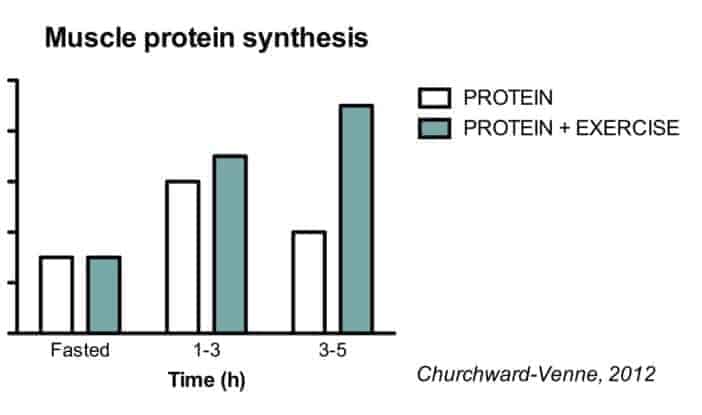
This is crucial because our body only builds muscles when the muscle protein synthesis rates are higher than the muscle protein breakdown rates.
So, Muscle Protein Synthesis Rate > Muscle Protein Breakdown Rate
And here’s the deal. Studies show that regarding post-workout, the muscle protein breakdown is only slightly raised.
What does that mean?
According to that, it is not necessary to actually prevent muscle protein breakdown because under normal circumstances this breakdown is only slightly raised.
But, however, there is one exception. Training in a fasted state.
For instance, working out before breakfast. If you train under such circumstances in a fasted condition, the case looks different.
Studies show that muscle protein breakdown is immensely raised post-workout when trained fasted.
Therefore, it is actually beneficial and important to supply your body with proteins and carbs relatively quickly post-workout when you train fasted.
Coming closer to end, the anabolic window suggests one more benefit: to replenish the glycogen stores.
Glycogen is a form of carbohydrates that are mainly stored directly in our muscles and liver. As we know carbohydrates function as the main energy source for our body.
Thus, the main source for our performance throughout the day, in the gym or at work, are carbohydrates. So it’s not a surprise that we can use up a lot of the stored glycogen by the end of a workout or other activities.
In order to perform as good as possible every day, make sure that your nutrition includes enough carbs. This accounts for everything, getting stronger in the gym, building muscle or even just to be up to speed.
So far so good, but what’s the problem with that?
Glycogen does not need to be refilled instantly after a workout. Just make sure to supply sufficient carbs before your next workout to perform well.
It goes even further. Studies show that there is no difference between consuming carbs immediately or 2-3 hours later. The glycogen levels were measured 8 hours and 24 hours later.
As a result, in both cases, glycogen levels were exactly the same.
To conclude, if you’re not working out multiple times per day, there is no need to consume a post-workout meal 5 minutes or 30 minutes after a workout. Just make sure to include enough carbs as part of your regular diet.
Conclusion
To close this article, let’s recap what’s important to remember about the anabolic window.
What can we say as a concluding remark after all this data? Is it actually true or just a myth?
Well, when looking at the suggested benefits of the anabolic window, it does sound logical.
Nothing particular wrong with it which is why it probably gained so much attention and was accepted broadly over the whole fitness community.
However, there is a major problem with it. The research does not support the theory.
To put it in a nutshell, there is no need to drink a post-workout shake or to rush home to eat a meal. There is no evidence that proves the anabolic to be true.
BUT, there is no exception. This does not apply to people who train fasted.
If you work out at 5 A.M. in the morning before breakfast, it is advisable and important to provide your body with nutrients (especially proteins and carbs) post-workout as soon as possible to prevent muscle protein breakdown.
For people who’re still not convinced at this point, check out this study about the long term benefits of post-workout shakes.
After 12 weeks of lifting, both groups of participants (men and women) showed no difference in muscle growth.
However, there is nothing wrong with a post-workout shake either.
It just does not live up to the benefits the anabolic window promises. If you want to drink a post-workout shake, feel free to do it. If you don’t want to, then don’t.
As a final note, the most important thing is your regular diet. Never put supplements over basic nutrition and keep it simple.
Fitness is not complicated at all. If you want to build muscles, set your main focus to get enough calories and protein in every day. If you want to lose weight, you need to be in a calorie deficit.
It’s as simple as that.
I hope you enjoyed this article, if yes I would appreciate if you share it with your friends and family.
For further content check out our blog and make sure to subscribe to stay up to date and never miss any new upcoming content.
Cheers for reading guys,
Claas

